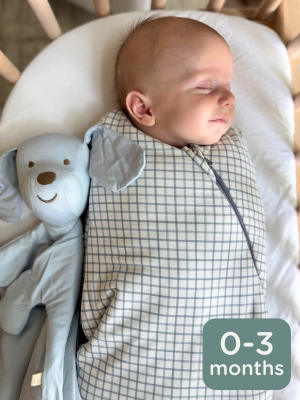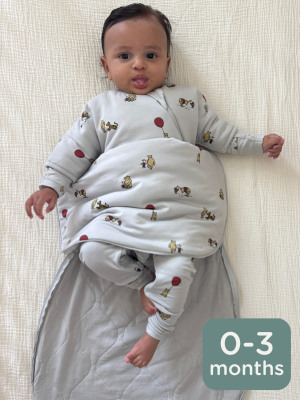With Daylight Savings ending soon, panic started to creep in as we started envisioning earlier wake up times. So to get ahead of this shift in those carefully orchestrated nap and bedtime routines, we consulted our good friend Kristin of Nightingale Night Nurses to share some of her expert tips on navigating Daylight Savings and baby sleep routines - and how she traditionally supports her clients during this frightful day on the calendar.
Enjoy the below expert insight - and get some sleep!

"Sunday Nov 1st, 2020 at 2:00am is the end of Daylight savings time. Time to turn back the clocks and score another hour of sleep. Sounds delightful, right? Well, it is, unless you have a child that will be waking at 5:00am and then falling asleep at the dinner table. Having a toddler or baby that’s an early riser can be challenging for some parents and the thought of “falling back” and losing another hour of sleep seems painful, but it doesn’t have to be.
We can help.
The way we see it, you have 3 options:
1 – ADJUST A HEAD OF TIME: This is a great option for children that tend to be early risers! You can choose from two gradual transitions that work really well. Shift bedtime by 15 minutes each night for 4 days or shift bedtime by 10 mins each night for 6 days.
4 Day Process: Shift bedtime later by 15 minutes for 4 days. You should plan to start this on Oct 29th.
- Example 7:00pm bedtime
- Night 1 – 7:15pm
- Night 2 – 7:30pm
- Night 3 – 7:45pm
- Night 4 – 8:00pm
6 Day Process: Shift bedtime later by 10 minutes for 6 days. You should plan to start this process on Oct 27th.
- Example 7:00pm bedtime
- Night 1 – 7:10pm
- Night 2 – 7:20pm
- Night 3 – 7:30pm
- Night 4 – 7:40pm
- Night 5 – 7:50pm
- Night 6 – 8:00pm
2- ADJUST AFTER THE TIME CHANGE: Sometimes the time change sneaks up on us and we don’t realize it until the day before! Don’t panic! You can start adjusting your child’s schedule by 10 or 15 minutes each day over the course of the next few days. Be prepared for some early wake ups.
3 – COLD TURKEY: When the time changes, simply adjust your child’s meals, naps and bedtime on Nov 1st to the new time (an hour earlier). Wake up times may vary for a few days but try not to start their day before the normal time (we consider everything before 6am a night waking anyways).
A 4TH BONUS OPTION; that we generally don’t do in the fall because our clients do NOT want to be up an hour earlier…is to do nothing. Within a month your baby will adjust to the daylight and likely end up waking later in the mornings again. [Or they might not- and you’re stuck getting up at 6am until March!]
Whether you choose to adjust bedtime before the time change, after the time change or just go cold turkey, you’ll want to ease the transition by shifting their meals and naps as well. Follow the same plan you chose for bedtime and apply those time changes to nap and meal times."























